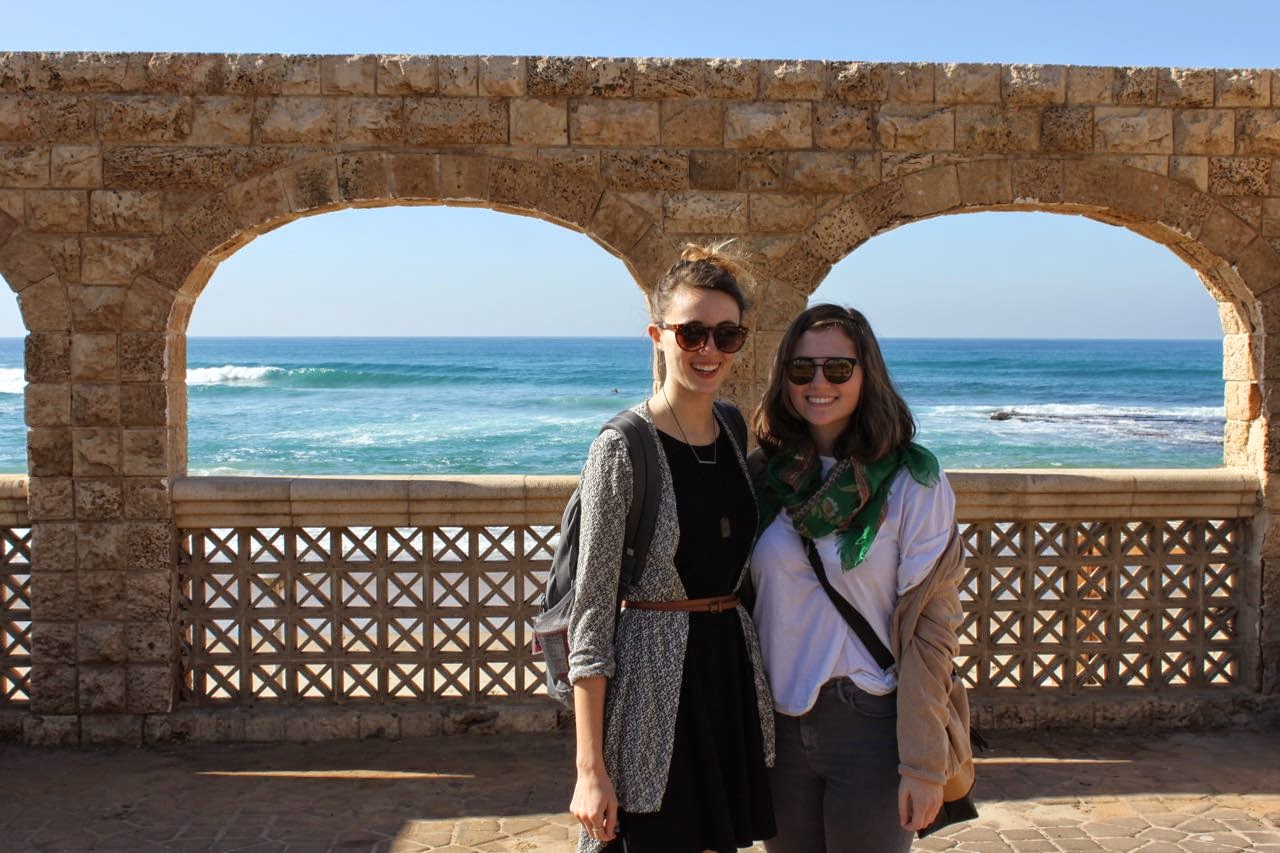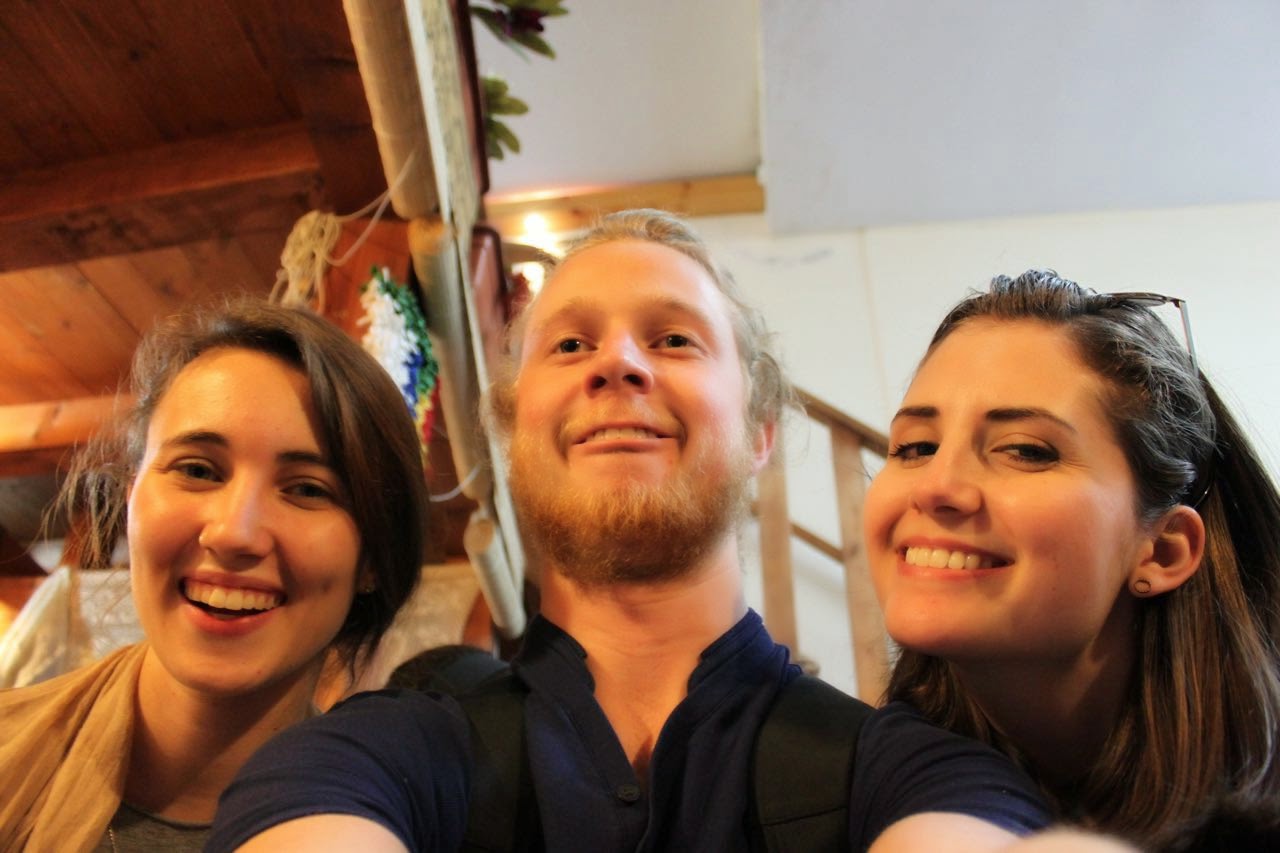We loaded into the bus for a drive up to the Sea
of Galilee. Our first stop was a church
built on a hillside overlooking Galilee.
The church was built in honor of the Sermon on the Mount, highlighting
the Beatitudes. We had a moment of
reflection outside of the church, and our Jewish guide Iftah spoke beautifully
about the significance of the Sermon on the Mount. It was quite interesting! We walked through the church, which was like
an eight-sided dome. Each side had a
stained glass visage that read one of the beatitudes in Latin.
 |
| Iftah, one of our guides on the trip |
 |
| Looking up the passages as we go to the real place |
We walked around the church, reflected a
bit more, and then got back on the bus.
We had a short ride to Capernacum, which was a nearby fishing village in
the time of Jesus. Now there are only
ruins from the original fisherman’s houses that were excavated. However, there is both a synagogue and a
church erected in honor of the historical significance of the sight. Here we also saw an artifact of a gesthemane,
which is the name given to the garden where Jesus prayed before his
crucifiction. However the literal word
gesthemane means an olive press. Which
is probably considered to be metaphorically fitting for the significance of the
Garden of Gesthemane. Kind of cool!
 |
| A monument inside the church on the mount |
After Capernacum, we went to a dock where
we took a boat out on the Sea of Galilee, which is called the Kinneret lake in
Israel. After a nice cruise, we traveled
up the slopes of the Golan heights to a beautiful restaurant called Ein
Gev. Lots of good food, including
amazing breads and chicken liver! We learned
about socialist communes that exist all over Israel and actually helped
establish the country as a whole that are called kibbutz. In these communities, members all work
together and take only as much as he/she needs.
Also, children are raised in a separate children’s home, spending only
hours a day with their parents. It is
amazing! Today there are more
capitalistic versions of kibbutz called moshev.
The community where Ein Gev is located is considered to be a mix of a
kibbutz and a moshev.
 |
| Down in Capernacum... |
 |
This synagogue at Capernacum was originally located somewhere else,
disassembled, and then reassembled at this holy site. |
 |
| The Sea of Galilee. |
 |
| Leor using our friend Chase as a human map of Israel. |
We continued up the hills to the peak of
the Golan heights where there is a former Syrian bunker and trenches. From there we could see the borders of Syria
and Lebanon. Iftah was telling us all
about the conflict between Israel and Syria in which Israel gained the land on
which we were standing. As he was
speaking to us we could hear distant rumbles and see faint plumes of smoke from
the active Syrian revolution. It was not
threatening at all, but definitely a bit menacing. It was crazy to be there, watching.
 |
| This is overlooking the Syrian border. |
 |
| Trenches at the Syrian bunker in the Golan Heights. |
We drove back down from the heights to our
kibbutz in Gonen, had a time of reflection on campus activism, had some dinner,
and then another session reflecting on all we had seen today. It is amazing!





















































